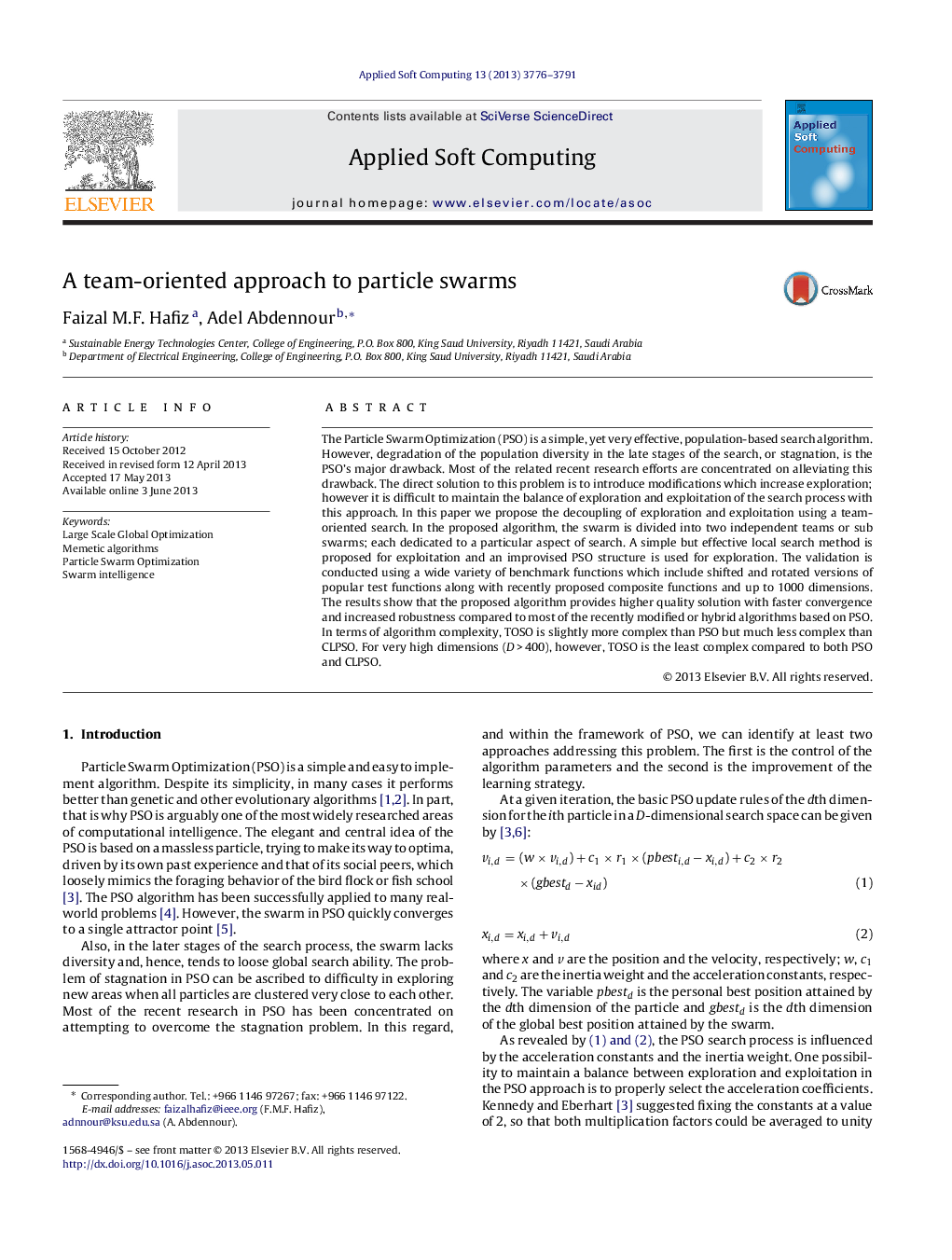| Article ID | Journal | Published Year | Pages | File Type |
|---|---|---|---|---|
| 496008 | Applied Soft Computing | 2013 | 16 Pages |
•Decoupling of exploration and exploitation of the search process is proposed to solve the stagnation problem of the PSO.•A “team oriented approach” is introduced; each team has dedicated purpose of either “exploration” or “exploitation”.•A novel method is proposed for the exploitation purpose; modified PSO model is used for the exploration purpose.•The proposed algorithm provides higher quality solution with faster convergence and increased robustness.•Such results are obtained with no significant increase in complexity.
The Particle Swarm Optimization (PSO) is a simple, yet very effective, population-based search algorithm. However, degradation of the population diversity in the late stages of the search, or stagnation, is the PSO's major drawback. Most of the related recent research efforts are concentrated on alleviating this drawback. The direct solution to this problem is to introduce modifications which increase exploration; however it is difficult to maintain the balance of exploration and exploitation of the search process with this approach. In this paper we propose the decoupling of exploration and exploitation using a team-oriented search. In the proposed algorithm, the swarm is divided into two independent teams or sub swarms; each dedicated to a particular aspect of search. A simple but effective local search method is proposed for exploitation and an improvised PSO structure is used for exploration. The validation is conducted using a wide variety of benchmark functions which include shifted and rotated versions of popular test functions along with recently proposed composite functions and up to 1000 dimensions. The results show that the proposed algorithm provides higher quality solution with faster convergence and increased robustness compared to most of the recently modified or hybrid algorithms based on PSO. In terms of algorithm complexity, TOSO is slightly more complex than PSO but much less complex than CLPSO. For very high dimensions (D > 400), however, TOSO is the least complex compared to both PSO and CLPSO.
Graphical abstractFigure optionsDownload full-size imageDownload as PowerPoint slide
